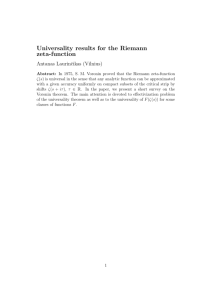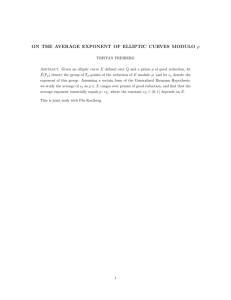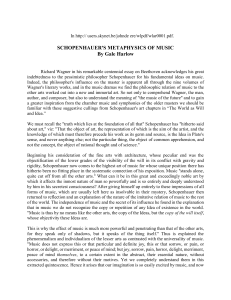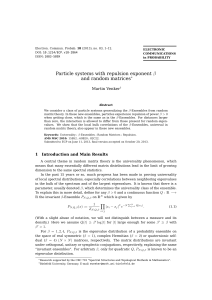Testing the Universality of the Lambda Transition Using Helium Mixtures
advertisement
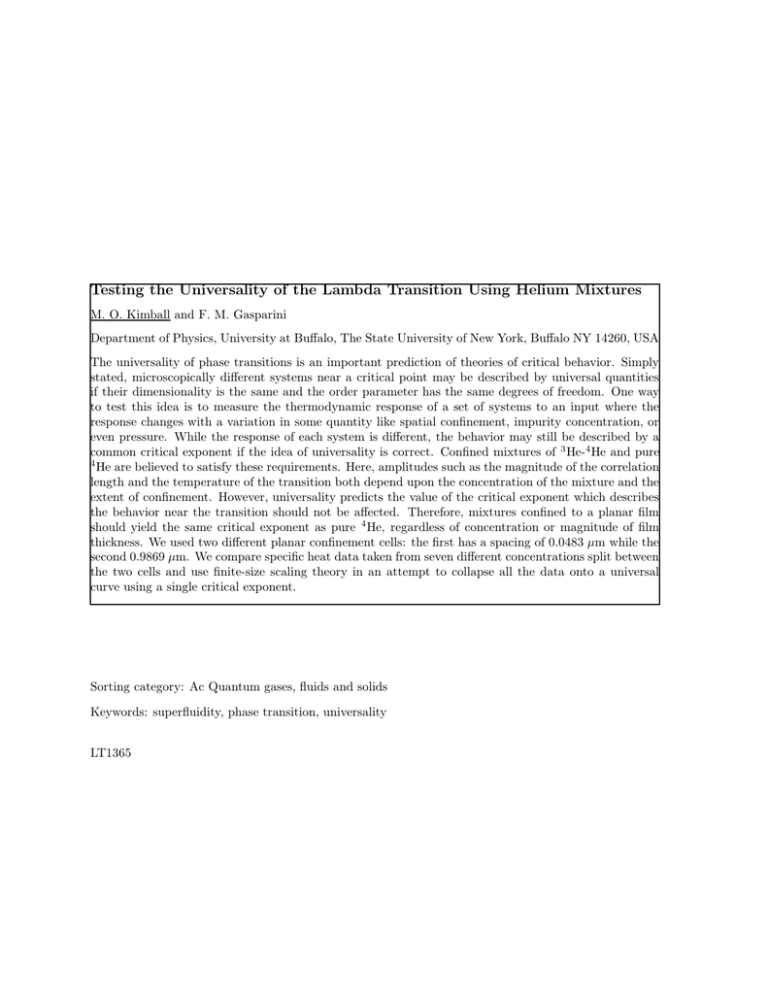
Testing the Universality of the Lambda Transition Using Helium Mixtures M. O. Kimball and F. M. Gasparini Department of Physics, University at Buffalo, The State University of New York, Buffalo NY 14260, USA The universality of phase transitions is an important prediction of theories of critical behavior. Simply stated, microscopically different systems near a critical point may be described by universal quantities if their dimensionality is the same and the order parameter has the same degrees of freedom. One way to test this idea is to measure the thermodynamic response of a set of systems to an input where the response changes with a variation in some quantity like spatial confinement, impurity concentration, or even pressure. While the response of each system is different, the behavior may still be described by a common critical exponent if the idea of universality is correct. Confined mixtures of 3 He-4 He and pure 4 He are believed to satisfy these requirements. Here, amplitudes such as the magnitude of the correlation length and the temperature of the transition both depend upon the concentration of the mixture and the extent of confinement. However, universality predicts the value of the critical exponent which describes the behavior near the transition should not be affected. Therefore, mixtures confined to a planar film should yield the same critical exponent as pure 4 He, regardless of concentration or magnitude of film thickness. We used two different planar confinement cells: the first has a spacing of 0.0483 µm while the second 0.9869 µm. We compare specific heat data taken from seven different concentrations split between the two cells and use finite-size scaling theory in an attempt to collapse all the data onto a universal curve using a single critical exponent. Sorting category: Ac Quantum gases, fluids and solids Keywords: superfluidity, phase transition, universality LT1365
